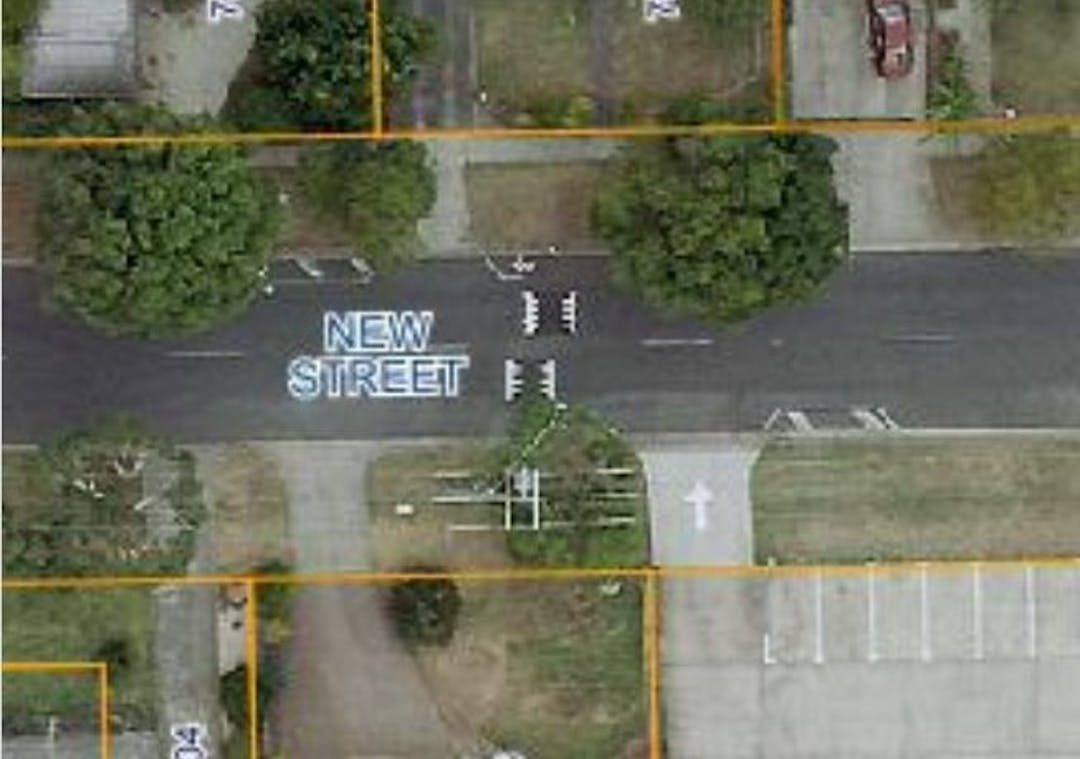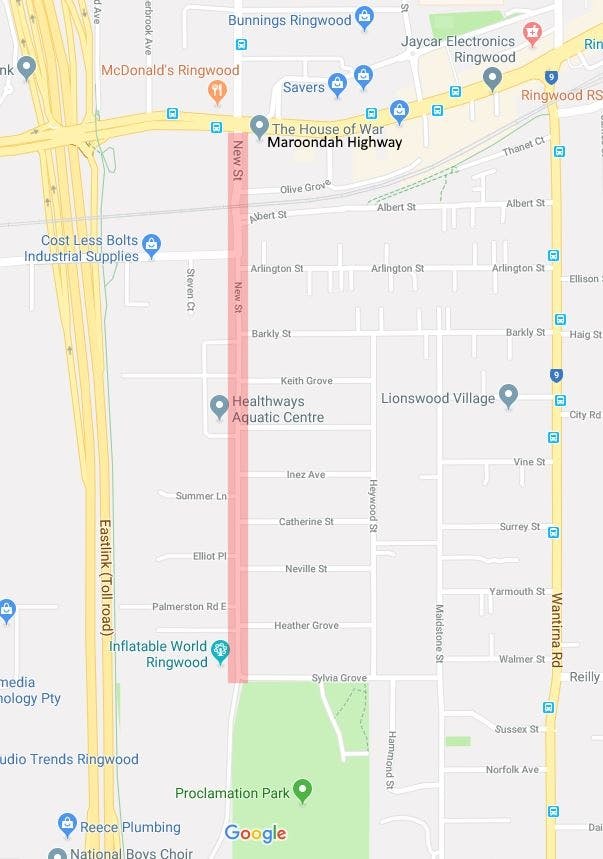Share Traffic Safety on Facebook
Share Traffic Safety on Linkedin
Email Traffic Safety link
Evidence shows that the installation of speed cushions in local roads is a highly effective form of speed control. New Street is surrounded by residential and industrial zoned land. The volume of heavy vehicles using this stretch of road means that any traffic treatment installed must be designed to accommodate these heavy vehicles.
The design of the speed cushions allows buses, trucks and other large vehicles to travel over the speed cushions with minimal disturbance, whilst still providing resistance to cars and other vehicles. Full road width raised pavements are not considered appropriate for New Street as they will impact heavy vehicles and increase road noise.
Rubber speed cushions, such as those installed on New Street, break down with age and become less effective at controlling the speeds of cars, as well as damaging the road surface below. Council has replaced three sets of the rubber cushions with asphalt cushions as a result of this issue however, obtaining precise tolerances with asphalt cushions is difficult, which can reduce their effectiveness at traffic calming.
We are proposing to replace the existing rubber and asphalt speed cushions with cast concrete speed cushions which are constructed to precise tolerances. We have recently used this product in Evelyn Street, Ringwood, and it has proven to be a superior product with respect to traffic calming, while being far more durable than the products previously used on New Street.
In addition there are two sets of traffic islands at the intersections of New Street and Barkly Street and New Street and Sumner Lane. We are proposing to removing the traffic islands within New Street (maintaining the islands in the side streets), and relocating some of the speed cushions to provide more consistent spacing along New Street. This should provide a more consistent traffic calming outcome in terms of the spacings of the cushions.
The speed cushions were originally installed in 2006 following a petition from New Street residents to Council.
Image shows a cast concrete speed cushion installed in Evelyn Street, Ringwood.
Share Pedestrian Facilities on Facebook
Share Pedestrian Facilities on Linkedin
Email Pedestrian Facilities link
We are proposing to install a pedestrian refuge near Molan Street and Arlington Street to allow pedestrians to undertake a staged crossing of the road. This location has been chosen as it will improve safety for pedestrians moving between the residential catchment to the east of New Street and Heatherdale Station (via Molan Street).
Council’s Principal Pedestrian Network (PPN) proposes the construction of the missing section of footpath along the west side of New Street, from 100 New Street to Sylvia Grove. This footpath will be included in the overall design for the New Street renewal works, however while it has been listed for future footpath construction, there are no short term plans (within the next five years) to construct this footpath.
Council’s PPN and five (5) year construction program can be viewed on our website at http://www.maroondah.vic.gov.au/Development/Roads-footpaths-and-drains/Roads-and-footpaths/New-footpaths-and-the-Principal-Pedestrian-Network
FAQ's which addresses some of the more common questions from the community regarding the PPN and construction priorities are also available via this link.
Share Traffic Lane Arrangement on Facebook
Share Traffic Lane Arrangement on Linkedin
Email Traffic Lane Arrangement link
New Street currently has two traffic lanes with parking generally allowed on both sides of the road. Due to the overall width of New Street, when there is a vehicle parked on either side of the road, there is limited width for through traffic making it difficult for two cars to pass safely. There is insufficient width for a car and a heavy vehicle to pass safely.
To address this we are proposing to alter the traffic lane arrangement to provide two through traffic lanes and the addition of a parking lane on the western side of New Street.
Whilst a parking lane is only proposed on the western side, parking would still be allowed along the eastern side of New Street in accordance with the Victorian Road Rules. This arrangement will assign priority to northbound vehicles and clearly identify that southbound vehicles are required to give way to oncoming vehicles when passing a parked car.
This lane arrangement has been successfully installed in other roads within Maroondah that have the same road widths as New Street, including Evelyn Road Ringwood, Heathmont Road Ringwood/Heathmont (north of Canterbury Road), Dublin Road Ringwood East (north of Mt Dandenong Road) and Beaufort Road Croydon.
(See all images)

Figure 1 - New Street - Example of Existing Lane Arrangement
Figure 2 - Evelyn Road - Example of Proposed Lane Arrangement

Figure 3 - Evelyn Road - Example of Proposed Lane Arrangement
Share Drainage Upgrades on Facebook
Share Drainage Upgrades on Linkedin
Email Drainage Upgrades link
Council’s flood modelling data indicates that properties along the western side of New Street, between Molan Street and the central common property access to the factories at 100 New Street, are impacted by overland stormwater flows from New Street. A history of resident complaints supports the flood modelling data.
We have undertaken concept modelling for drainage upgrades to mitigate this flooding. These works are likely to involve:
- Duplicate stormwater drain from Albert Street to 98 New Street.
- Additional stormwater pits.
- Upgrade of the stormwater easement drain through 98 New Street and through the common property of 100 New Street (outside units 2 to 4).
- Raising of footpath (including vehicle crossing and driveway alterations) outside 78 to 98 New Street.
- Raising of the road pavement levels in Molan Street at the intersection with New Street
Copies of the existing conditions and concept mitigation flood extents for the
1 in 20 and
1 in 100 year probability storm events can be found in the document library on this page.The flood mitigation works will be further developed as detailed design progresses.









